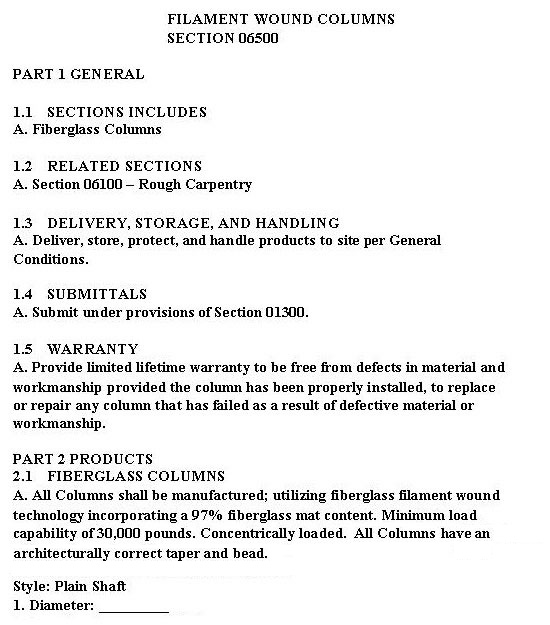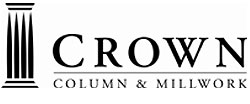Architectural Columns: Classic to Current
Specifying Columns
As discussed in this course, column possibilities are extensive, whether choosing “off the shelf” columns, combining components for a custom design, or creating an original design. In addition to historic replications, other custom possibilities include pilasters, octagonal columns, columns to surround structural supports, or columns created to original designs.
The Column Options Checklist here (could be in text, or composed as a graphic) summarizes some of the options and considerations. In addition, there are a few basic concepts which are basic parts of using and specifying columns. The column manufacturer should have complete resources and data for making these choices and supporting the entire specification and installation process.
Splitting: Columns can be split to fit different interior and exterior applications, or to surround structural supports. The parts are then splined or tabbed for accurate reassembly. Manufacturers supply tables that specify the size of round or square columns required to wrap a supporting member. Split columns are no longer load bearing. (an image here of the various plans would be great!)
Splitting affects the interior dimensions, so tables are supplied to indicate the exact measurements for specific products.
Cutting “at the bead”: A wide range of separate, decorative capitals are available for wood or fiberglass columns, and as we’ve seen it is also possible to design new capitals. To attach these capitals to the column, the column must be “cut at the bead”, cut flush at the convex molding also called the astragal.
A certain amount of “cut at bead loss” must thus be calculated. Since this causes a varying amount of loss to the height of the column, the manufacturer supplies tables with the estimated “cut at bead loss,” to make sure that the column with the new capital fits the space precisely. Cutting for wood columns is typically done at the manufacturer, but cutting for fiberglass columns can generally be done either at the manufacturer or in the field.
Assembly Options: Some column styles will be available in a choice of assembly options, including flat stock delivery in individual boxes for wrap-around construction and quick installation; columns delivered fully assembled; or “L-wrap,” two L-shaped halves ready to wrap around an existing structural post.
Column Installation and Specification
Column manufacturers provide detailed instructions for the care, handling and installation of their products, along with guide specifications as discussed above. Correct installation is critical to the correct functioning and long-term durability of the column, but column installation is a relatively simple process, and similar for both wood and fiberglass columns.
Here is a sample guide specification for filament wound columns.


The Order of Today
Technically, there is little to prevent architects today from devising their own new architectural orders. Computer aided milling can execute almost any original design. But there is also no necessity, since the components of existing orders can be replicated, adapted, mixed and matched. These old or new styles can be manufactured in traditional materials like wood or in advanced new composites of fiberglass, resins and polymers. It is still possible to find columns being manufactured to classic standards, sometimes with hand craftsmanship, but also with a wide range of new possibilities and combinations.
Today the column still lends a quality of story, grace and gravitas.
Resources
 |
Crown Column & Millwork manufactures architectural columns, various styles of fiberglass round and square columns, softwood and hardwood columns, mantle columns, decorative capitals, vinyl and wood porch posts, and composite and vinyl rail systems. |








